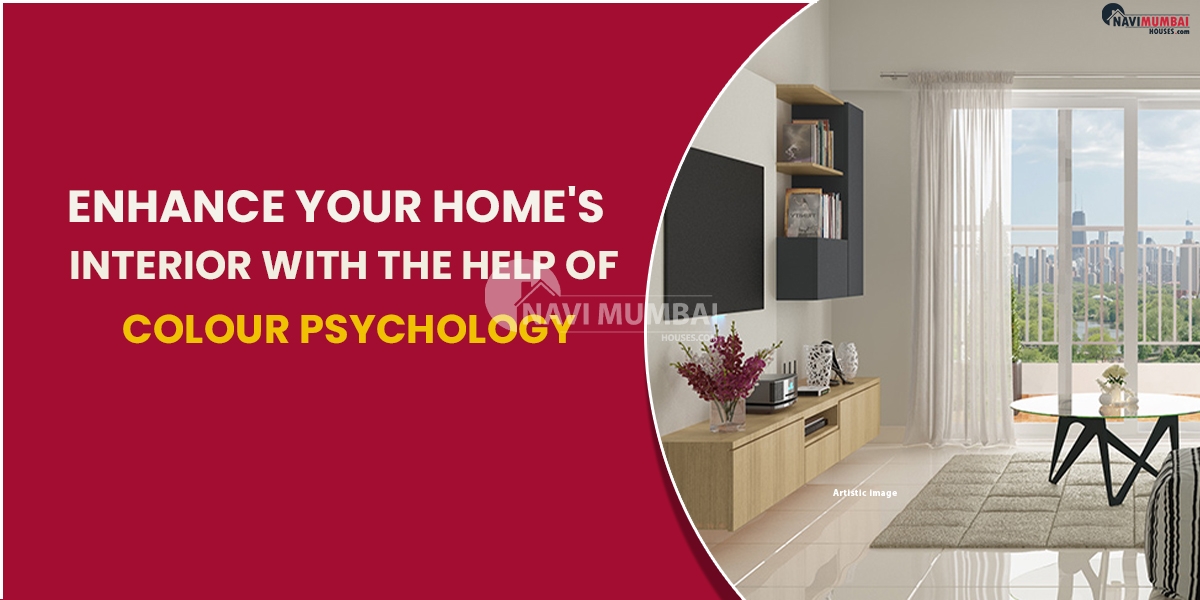
- October 11, 2023
- Decor, Life Style, News
Enhance Your Home’s Interior With The Help Of Colour Psychology
Introduction Enhance Your Home Interior With Colour Psychology
Enhance your home interior with colour psychology our ability to think is substantially influence by colour. Different emotions are evoke by various colours. Colour psychology investigates how various hues may affect our behaviour. Through understanding it, we may improve the atmosphere in our houses. Here’s a detailed look at the meaning of colours and how to apply them to your living space.
Your mood and behaviour might be affect by a room’s colours. While some colours might produce anxiety and eye strain, others can induce sensations of serenity and relaxation. Therefore, it is crucial to understand how each colour affects us in order to optimize our living space. Notably, colour psychology clarifies how each colour effect on our moods works. It enables us to comprehend how colour affects us and how the human mind interprets colour.
Are you looking for new projects in Shilphata ?
Let’s go into the psychology of colour and how it may be apply to interior design for good:
What Is Colour Psychology?
The goal of colour psychology is to comprehend how colour affects how people behave. It examines the many emotions that various colours elicit and how reactions to various colours are affect by variables like age and gender.
Personal preference is another aspect that affects colour psychology in addition to these ones. To comprehend the idea of colour perception and the impact of diverse colour combinations, colour psychology uses colour theory (the practical application of mixing and matching distinct hues).
Interior Design & Colour Psychology
To understand the meaning that a particular colour carries, it is essential to understand colour psychology. Give that everyone is affect by the colours in their surroundings, it is critical to comprehend how a certain shade will affect a person’s feelings. Studies have demonstrate the connections between colour preference and age, personality attributes, and socioeconomic status.
For instance, younger people tend to favour saturated colours more; however, as they age, they start to favour less saturated and lighter colours more.
Additionally, colour affects how we perceive space. Painting every wall, for instance, makes a room appear larger than it actually is. The room appears smaller when the sides of the walls are paint solely white.
How Does Colour Affect Mood?
While various people may have varied perceptions of certain colours, some impacts are universal. Warm hues like red and orange arouse a variety of feelings, from consolation and optimism to fury and rage. While cool hues like green and purple are more relaxing and help to reduce anxiety, They can, however, simultaneously evoke sentiments of melancholy and disinterest.
What Is Psychology Of Black Colour ?
Black represents class, strength, and richness. It can also signify neutrality and simplicity. This colour works well with contemporary architecture and furnishings. However, a pitch-black environment can be oppressive and gloomy. To create a startling contrast, it works best when combined with other colours like red and white. Grey is a shade that some interior designers use frequently to highlight other hues or give the impression of depth.
What Is Psychology Of Green Colour ?
Green is pleasing to the eye and promotes a calm, revitalize feeling. It creates a sense of security and is often comforting. Darker green hues can also represent avarice and resentment. Lighter green hues can be use on walls to contrast with darker green hues found in plants.
What Is Psychology Of Orange Colour ?
Orange is a vibrant and vivacious colour that some people could find invasive. It is frequently use as an accent colour to draw attention to a feature. However, using it as a brighter colour as opposed to a darker one will be more beneficial. The colour white or neutral goes best with orange. It can also be use in kitchens to stimulate hunger or in workout areas to excite individuals.
What Is Psychology Of Pink Colour ?
Pink is a lovely shade that traditionally represents femininity. It represents love, sensitivity, and empathy. It can have a fun or romantic effect on individuals when employed in a space. However, pink hues like millennial pink or hot pink might be seen as contemporary or rebellious. By combining vivid pink hues like magenta with accent hues like aqua, you may use them to draw attention.
The Most Relaxing Colours
While some hues give the appearance of a bustling setting and add flair to the design, others have a more soothing impact on individuals. They are more soothing and give you a sense of security. Earthy, warm colours with modest saturation tend to be the most relaxing.
Pink is the most physically calming colour, even though blue is thought to be the most calming colour in terms of colour psychology. Other relaxing hues include grey, earthy greens, lavender, and dusty light yellows. The most calming colour for the eye out of all of these is green.
The Most Powerful Colours
According to colour psychology, some hues have a strong effect and might help you feel stronger and more in control. Red can elicit the strongest emotions because it is the most powerful colour. It draws attention and can revitalize both the body and the intellect. Another potent colour is blue, which is simple for the human eye to distinguish on the colour wheel.
Black is regard as the sturdiest colour and represents both strength and elegance. It is thought to be the best in class and exceptional. Dark purple is a strong shade that is often use to denote ambition and ruthlessness. It is also link to monarchy.
The Happiest Colours For Mood
Bright and warm hues like yellow, red, and orange, as well as peach and lilac, are said to be the happiest colours for boosting your mood. You feel upbeat and pleased when you see hues that are brighter and lighter. Additionally, you can mix a variety of hues to create a cheery atmosphere.
The Best Colours For Different Parts Of The Home
Your home’s colour scheme has an impact on how you feel and how you think. In order to create a positive atmosphere in your home, the proper hue must be chosen because different areas of the house have different energy. The ideal hues for each room are list below:
| Room | Suitable Colours |
| Bedroom | Light blue, light green, light brown, silver |
| Living room | Maroon, green, white, teal, grey, yellow |
| Bathroom | Yellow, white, peach, grey, neutrals |
| Kitchen | Orange, red, blue, cream, white |
| Kids room | Blue, purple, green |
| Balcony | Cream, off-white, light blue, beige |
| Pooja room | White, orange, yellow, light green, pink |
| Dining room | White, yellow, cream, teal |
Enhance Your Home Interior With Colour Psychology : Conclusion
Colour can strongly influence our emotions. Each colour has a certain meaning and should be use in accordance with the atmosphere you wish to create in your space. A relaxing effect can be achieve with some colours, while enthusiasm and excitement are produce by others that are more subdued. When decorating your house, keeping in mind the principles of colour psychology can help you create a space that is more upbeat and cosy.
Navi Mumbai Houses a Real Estate source is the most trust names in the market believes that master pieces can only be achieve by the client’s satisfaction. So that you can give your quality time with your loved ones is actually worth enough. Do you want Sale house, Flats in thane our portal is help you to find a buy flat to your price so please visit n find.
2 BHK Flat For Sale In Navi Mumbai | 8433959100
You are looking for new projects in Shilphata we have new projects in Shilphata at affordable price
https://navimumbaihouses.com/properties/search/shilphata/
If you want daily property update details please follow us on Facebook Page / YouTube Channel / Twitter







